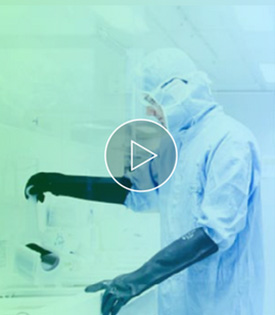Human CD133+ stem / progenitor cells from mobilised peripheral blood
Supplier: Charles River Laboratories Cell Solutions
Human mobilised peripheral blood CD133+ stem/progenitor cells are isolated from peripheral blood mononuclear cells (PBMCs) using positive immunomagnetic cell separation procedures. Peripheral blood cells are collected from normal human volunteers by direct collection or by using the COBE® Spectra or Spectra Optia® Apheresis System where cell-rich leukapheresis product is extracted using continuous flow centrifugal technology directly into the collection bag.
- Purity of >85% by flow cytometry
- Test negative for Hepatitis B, Hepatitis C, HIV 1/2, HTLV-I/II, HIV-1/HCV/HBV nucleic acid, WNV nucleic acid, Trypanasoma cruzi and Syphilis
Cells expressing the CD133 (AC133, Prominin-1) marker are generally known as primitive hematopoietic stem and progenitor cells (HSC and HPC). While cells expressing the CD133 marker are usually undifferentiated embryonic stem cell lines, this cell type is usually harvested from bone marrow and cord blood, but can be also found in multiple locations including the liver, muscle, prostate, kidney, and neural tissue. CD133 stem cells appear to be ancestral to the CD34+ stem cell line due to their ability to differentiate into CD34+ cells and also their higher level of proliferation activity.
Capable of a high level of proliferation and a wide range of differentiation, transplantation of CD133+ cell lines has been shown to not only induced multilineage human hematopoiesis through the CD34+ lineage, but also induce regeneration of cell lines in vitro in multiple locations by differentiating into endothelial cells, neural cells, hepatocytes, osteoblats, and myocytes, with the list of tissue types this cell can differentiate into gradually increasing.
Storage: Either prepare cells for long term storage in liquid nitrogen vapour phase or thaw for use. Storage in liquid phase nitrogen is NOT recommended. Short term storage of cells (less than 2 weeks) at –80°C is acceptable, but should be minimised to ensure maximum stability. Once thawed, samples must be used immediately.
Upozornení: Intended for research use only and not for direct therapeutic or diagnostic use in human or animals, or for further manufacturing of therapeutic products or devices. Storage in liquid phase nitrogen is not recommended.
Learn more

About VWR
Avantor is a vertically integrated, global supplier of discovery-to-delivery solutions for...